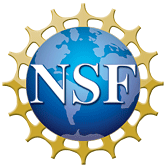EarthCube Research Coordination Network - Advancing the Analysis of High Resolution Topography


FUNDING
NSF-EAR #1642611, #1642610, #1642620
LEADERSHIP TEAM
Paola Passalacqua (UT Austin - Principal Investigator)
Nancy Glenn (Boise State University - Principal Investigator)
Christopher Crosby (OpenTopography/UNAVCO - Principal Investigator)
With administrative and sponsorship support from UNAVCO, NCALM, and OpenTopography
ADVISORY COMMITTEE
Craig Glennie (University of Houston)
Dimitri Lague (Universite de Rennes, France)
Josh Roering (University of Oregon)
Jason Stoker (USGS)
Joe Wheaton (Utah State University)
EVENTS
- Advancing the Analysis of High Resolution Topography Workshop #1, August 21-24, 2018 Omni Interlocken Hotel, Broomfield, CO
- From point clouds and full-waveform data to DEM analysis, September 30th to October 4th, 2019, Potsdam, Germany
- CSDMS 2020 online clinic: Exploring surface processes and landscape connectivity through high-resolution topography: integration of high resolution data in numerical modeling, May 19, 2020, 1-3pm MDT
- Advancing the Analysis of High Resolution Topography Workshop #2, May 8-10, 2023, Arizona State University, Tempe, AZ
RCN OVERVIEW
Technologies such as lidar (light detection and ranging), multibeam sonar, structure from motion photogrammetry, and synthetic aperture radar have transformed the acquisition of high resolution terrain, bathymetry, and vegetation structure data. Collectively, we refer to these data as high resolution topography (HRT). Petabytes of HRT data have been collected, with applications ranging from scientific research to commercial sector engineering. However, full scientific utilization of these HRT data is still limited due to challenges associated with the storage, manipulation, processing, and analysis of these data. Development of algorithms that can extract information from these incredibly rich point cloud data, and scale analysis to datasets containing many billions of points, are still open research questions. Furthermore, standards, best practices, and early career scientist training in the use of these data for Earth science research are needed. This project will bring together Earth science researchers and experts in cyberinfrastructure to coordinate and develop work-flows and best practices. We will identify places where new tools and computational infrastructure can yield new research impacts, and will develop recommendations for NSF investments in HRT technology going forward. Finally, we will provide training in HRT best practices for graduate students and early career professionals who represent the next generation of Earth scientists.
The earth surface processes and hydrology research community lacks tools to fully analyze HRT point clouds, extract features, exploit rich information contained in full waveforms, and deal with the tremendous spatial and temporal variability of landscapes captured in these data sets. Furthermore, many earth scientists are utilizing these datasets without consideration to data acquisition methods, data sampling regularity, quality, and validation. There are considerable challenges related to the cyberinfrastructure necessary to support storage, manipulation, and analysis of these data to enable the next generation of research. Solutions for data discovery and federation across NSF-supported facilities and initiatives, access to high performance computing resources to scale processing of HRT data, and integration of these data into modeling and analysis frameworks are outstanding. The cyberinfrastructure community, including computer vision, computer science, informatics, and related engineering fields are developing advanced tools for visualizing, cataloging, and classifying imagery data including point clouds. Yet, many of these tools are most applicable to engineered structures and small datasets, and not to heterogeneous landscapes. Together the earth science and cyberinfrastructure communities have the opportunity to test and validate emerging tools in challenging landscapes (e.g., heterogeneous and multiscale landforms, vegetation structures, urban footprints). This EarthCube Research Coordination Network (RCN) project will bring HRT focused NSF-supported initiatives and the earth surface processes and hydrology community together to discuss technical challenges and cyberinfrastructure requirements to answer scientific questions, coordinate research activities, and share best practices and resources. This RCN will advance the analysis of HRT data for earth science investigations by leveraging tools and techniques developed in the cyberinfrastructure community. A framework to promote collaboration between the earth science and cyberinfrastructure communities is critical to utilize HRT data to advance the understanding of earth surface processes. In particular, this RCN will be focused on four themes: (1) coordination of the analysis of HRT data across the earth surface processes and hydrology communities to identify work-flows and best practices for data analysis; (2) identification of cyberinfrastructure tool development needs as new technologies for HRT data acquisition emerge; (3) use of HRT data for numerical models validation and integration of HRT data information in models; (4) training in HRT best practices, and data processing and analysis work-flows. Training will focus on graduate student and early career researchers to promote use of HRT data by the next generation of earth scientists.
